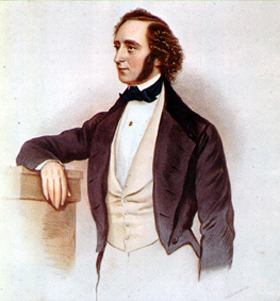Trivia
Cello masterpieces: Solos
Although there are not as many solos for cellos as there are for violins, there are many gems overflowing with charm to catch the ears of listeners. In this section we introduce a masterpiece each from the 18th and 19th century.
J.S. Bach, 6 Cello Suites, BWV.1007-1012
This masterpiece, seen as the "bible" of cellists, should be well-known by any player of the instrument. In his six cello suites, Bach sought to demonstrate the potential of the cello as a solo instrument. Each suite is arranged like classical-style dance music, starting with a prelude, then moving to an allemande, courante, sarabande, either two minuets or two gavottes, and then a gigue. Peculiar to Bach is how he tries to create counterpoint music with a single cello. These suites were forgotten after Bach's death, perhaps due to this special peculiarity. Fortunately, Pablo Casals, the greatest cellist of the 20th century, realized how very important these suites were to any cellist's repertoire. Thanks to Casals' discovery, many 20th century composers began working with solo cello music, such as Max Reger and Zoltan Kodaly (in the first half of the century), and George Crumb and Krzysztof Penderecki (in the second half of the century).
L.v. Beethoven: Cello Sonata No. 3 in A Major, Op. 69
Although Beethoven wrote five cello sonatas, "Sonata No. 3" is most often played as it was composed during his "Forest of Masterpieces" period in which he also wrote such works as "Fate" and "Pastoral Symphony." This sonata was dedicated to Baron Gleichenstein. Beethoven likely dedicated the piece to express his gratitude for the support of the Baron, who adored the cello. As can be heard in the main theme played by the cello alone at the beginning of the first movement, its passages expertly balance song-like rolling melodies with flamboyant use of technique. As the piece unfolds the piano and cello interact on equal footing, further adding to the charm that only a duo can provide.
F. Mendelssohn: Cello Sonata No. 1 in B-flat Major, Op. 45
Although Mendelssohn is known for leaving behind a great many beautiful song-like melodies, his two cello sonatas (Sonata No. 2 is in D major) show his skills as a melody-maker in full bloom. Sonata No. 1, however, is a particularly good example of this. Passages such as the first movement and the first main theme of the finale feature melodies so charming that listeners can't help but be entranced. Although the piano parts are quite difficult (possibly because Mendelssohn himself was a brilliant pianist), the cello parts have just as much presence.

Felix Mendelssohn (1809-1847)
Musical Instrument Guide : Violin Contents
Origins
Structure
How to Play
How the Instrument is Made
Choosing an Instrument
Care and Maintenance
Trivia
- The f-hole used to be a C-hole or S-hole
- Why the f-hole?
- Violinists must bow to the horse
- Steel strings or gut strings? That is the question
- Is the chinrest the unsung hero of the violin?
- Most violin varnishes are also medicines
- Violin masterpieces: Solos I
- Violin masterpieces: Solos II
- Violin masterpieces: Solos III
- Violin masterpieces: Concertos I
- Violin masterpieces: Concertos II
- Viola masterpieces: Chamber music
- Viola masterpieces: Concertos
- Cello masterpieces: Concertos I
- Cello masterpieces: Concertos II
- Cello masterpieces: Solos
- Contrabass masterpieces: Concertos
- Contrabass masterpieces: Chamber music
- Orchestral masterpieces featuring the contrabass
- What do you call the part on the bow that you hold?
